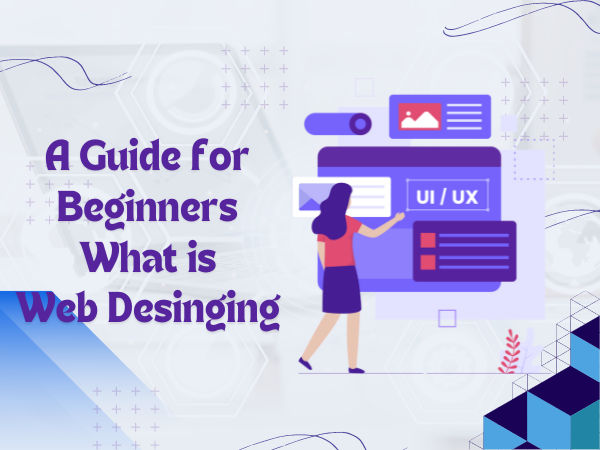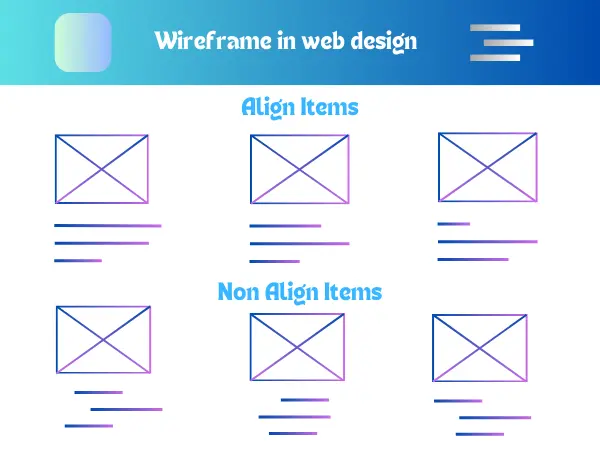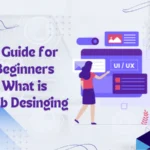Digital age is full of personal portfolios, online businesses, and other services supported by web design that is essential for successful operations. What is web designing? In which way is it different than web development? In this tutorial, you will find out everything about web design, its importance, main principles, tools, and the most frequently asked questions.
What is Web Designing?
Web design is the process of creating the visuals involved in a website. It embraces among other things, such as typography, color scheme, layout, and user experience (UX). A web designer is a more design-focused role, whereas a web developer is more focused on the back end and technical aspects of the website.
Good design is those which are more than merely visual appealing. It communicates the brand’s message effectively to the audience and offers an interactive and easy-to-go experience. Web designers usually work in close cooperation with web developers, content developers, as well as marketers to ensure the site is functional and user-friendly.
Key Components of Web Designing
How to create web design, the web designing process is closely related to the conception of user-friendly website structures that are not only aesthetically sound but also drive engagement and performance. The components of these elements could be considered the following:
1.Layout
The layout is the way that the content is organized on a website. A properly constructed structure makes it possible for a user to find the information he needs quickly and conveniently. A good example is a use of the layouts such as grids, single-page scrolling, or cards.
2.Color Scheme
Colors are a powerful means of communication in website design; they tell the visitor your website’s story, which makes the first impression. A proper color palette can be the best way to show your brand and the one that will be in contrast to emphasize the vitality of separate items. Designers use complementary colors very often to create peacefulness.
3.Typography
The aspect of typography includes font choice, size, weight, and spacing. The use of the right typeface can increase readability and capture the overall tone and purpose of the website. Reducing the usage of words that just adapt to the screen but also can change when different screen characteristics are available is a must.
4.Pictures and Illustrations
Moreover, websites, enriched with graphics and images, are always more eye-catching. The choice of images is key to the user experience. Furthermore, images must link their text with the contents in order to be compatible.
5.Orientation
The linked range of paths that lead visitors on your website is what we call navigation. Designing an easy and user-friendly navigation system is essential, more often using the buttons, menus, and links.
6.Responsiveness
Thanks to responsive web design, your website will look and function beautifully on all platforms, including PCs and smartphones.. Since more and more people are using smartphones, being responsive is an important SEO and user happiness issue.
7.How Users Feel (UX)
Every aspect of the user’s interaction with the website is included in the user experience. A well-designed website leads to a good UX: friendly, informative and easy to use.
What is the purpose of web design?
There are various explanations for why the design of a website matters.
1.Initial Impression Counts
Many times, a person’s first impression of your company is the website’s design. The visually appealing website, in turn, gives confidence and encourages them to stay longer. On the contrary, poor design may repel visitors and may affect the performance of the bounce rate and the search engines’ rankings.
2.Enhances Usability
Good design of a website helps users to find the content they are looking for more easily. A website that is hard for users to get along with might make them frustrated, which can affect customer engagement and conversion rates.
3.Advantages of SEO
Websites that create pleasant user experiences are the ones that are preferred by search engines like Google. With a modern, responsive, and neat design you will get a knock-up in your website’s SEO rankings as well as you will be easier to spot by possible customers.
4.Identification of the Brand
Your site’s look and feel communicate a lot about your brand. Design consistency in terms of coloring, typography, and imagery helps to construct your brand identity and thus can become memorable to consumers.
5.Higher Conversion Rates
A well-structured website directs recipients toward required actions, e.g., contacting your company, buying a product, or subscribing to your newsletter. You can improve response by ensuring you put into effect CTA (calls to action) appropriately.
Process of Web Designing
How to start web designing, the web design process is a well-articulated approach to developing a website that should be both visually appealing and user-friendly. It involves several steps or stages within the development process, each being very important toward the general design and usability of the site. Let’s see how to do web designing is an overview of the web design process:
1.Planning
The initial stage that involves the understanding of what exactly the client wants in regard to his business needs and objectives, and who his targeted audience is. This involves the ideas that capture the purpose, structure, and features. Usually, wireframes and site maps are drawn so it is visually stated how the website would look and navigate.
2.Design
This stage will be targeted at the look and feel of the website through the use of graphic design principles in layouts, color schemes, typography, and visual elements. During this stage, the interactive design elements like buttons and menus will be designed to present an appropriate look to the website.
3.Development
After the design has been approved, development can begin. It involves the web designers and developers taking the visual design and developing it into a working website. This includes coding in HTML, CSS, and JavaScript, with integration to back-end systems or content management platforms if required.
4.Testing
Extensive testing of the website is performed on multiple devices and browsers. This would also include bug detection and fixing, improvement in performances such as those of page loading time.
5.Launch
When all tests have been performed, the website will be made live and deployed. To maintain the website bug-free, update the content, or even performance improvement, maintenance may be required.
Frequently Used Web Design Tools
What does a web designer do, a diverse array of tools are presented to web designers which can be used to develop and optimize websites. Here are some of the tools that enjoy robust followings:
1.Work with Adobe XD
Adobe XD which is a popular UI/UX design tool allows users to wireframe, a user experience design, and a prototype.
2.Sketch
Sketch is a vector graphics editor that is often used to create the prototypes of websites and mobile apps and interface designs.
3.Figma
Figma, a cloud-based design tool, teams can now collaborate in real time. The tool is of much importance to huge projects with many designers and developers.
4.The Canva
Canva is a very good application for making web design elements like banners, icons, and images even though its main function is the visualization of designs.
5.WordPress
WordPress is a highly popular content management system (CMS), which provides the option of drag-and-drop page builders like Elementor and Divi, thus letting those who have no knowledge of code create websites.
Advantages of Web Designing
1.Better UX
Better UX means an unhindered browsing experience. In other words, they would be able to find whatever they look for within a short time and thus can keep themselves online, on the website, for a much longer period of time.
2.Responsiveness
As the use of mobile devices is so high, responsive design has now become an obligation. Good web design ensures your website adjusts from small and medium-sized to extra-large screen sizes with great consistency across platforms.
3.SEO-friendly design
The modern web design uses the SEO techniques which provide maximum visibility to a website using search engines. It may drive more traffic, give good ranking, and more business opportunities.
4.Brand credibility
The professional and visually attractive website speaks volumes about the brand, allowing them to establish credibility and garner trust with their prospects. It makes them stand tall online for survival in the market.
5.More Conversions
With design features like strategically placed calls-to-action, fast page loads, and intuitive interfaces, users will be more engaged in converting to sales, subscriptions, or whatever other action is desired.
Frequently Asked Questions Relating to Web Design
1.What distinguishes web design from web development?
Web design focuses on the visual and interactive aspects of a website, which include the layout, color schemes, and user experience. Web development, on the other hand, is associated with the technical aspects of things, such as database management and coding.
2.Does web design require coding?
Though useful, coding skills are not always a necessity in designing sites. It is actually quite possible to design without knowing code, thanks to a number of different tools that include site builders such as Wix and WordPress.
3.How much time does it take to make a website?
This depends on the complexity of the website. A complicated project might take you weeks or even months to accomplish. On the other hand, a simple site can be done within a couple of days.
4.What is a user-friendly website?
A user-friendly website is one that should be able to load up really fast, be easy to navigate, and be in a position to avail details pertinent to whatever is being searched within that website. Its design should be responsive on mobile and clear in its navigation and UX.
5.Is it possible to design my own website?
Yes, you can, but there is an opportunity to build a website with such programs as Squarespace, Wix, or WordPress. Still, it might be better to use web designers when you look for more sophisticated or professional design.
Conclusion
Web designing is one of the most important factors in having an effective online presence. It is more than just making the web look pretty. A good web design would enhance user experiences, increase SEO ranking, and strengthen the brand identity. With the right tools, one can pretty much easily create a pretty and functional website which meets almost all the needs of businesses.
If you want to get web designing services click here Web Designing






Thanks for sharing, very helpful content.